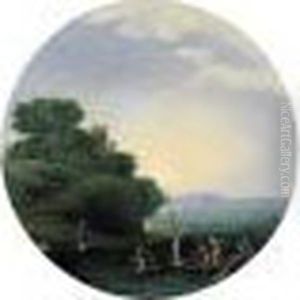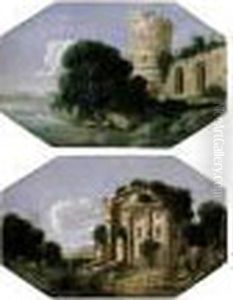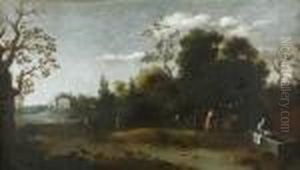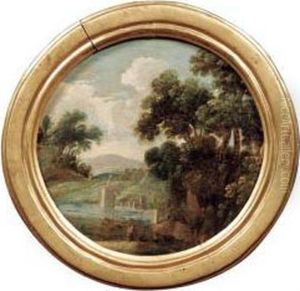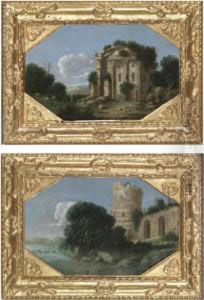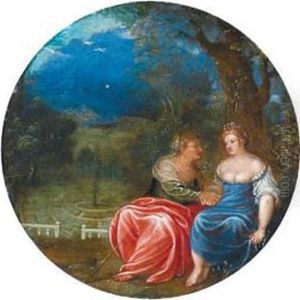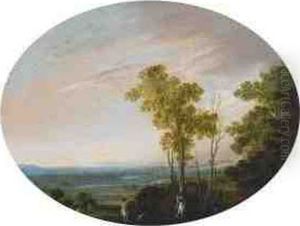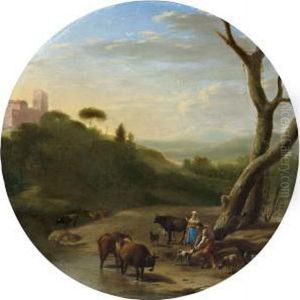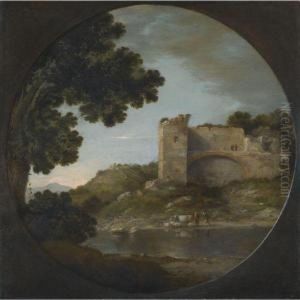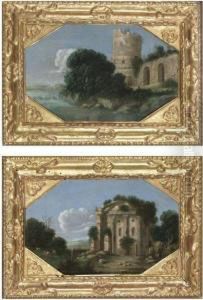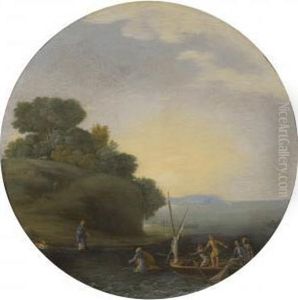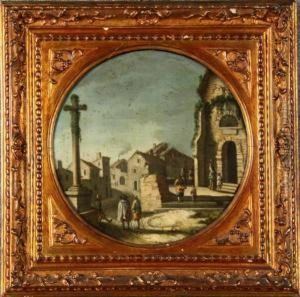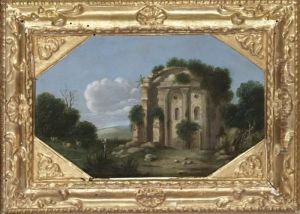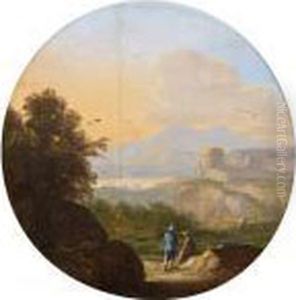Goffredo, Gottfried Wals Paintings
Goffredo Wals, also known as Gottfried Wals, was a German painter who was born in Cologne in 1590 and died in 1638. He was a pivotal figure in the world of landscape painting during the late Renaissance and early Baroque periods. Despite the scarcity of detailed records about his life, Wals is recognized for his influence on the development of landscape painting in Italy and Northern Europe.
Wals traveled to Italy at a young age, where he absorbed the Italianate landscape tradition, integrating it with his northern European sensibility. This unique blend of influences allowed him to develop a distinctive style characterized by meticulous attention to detail and a profound appreciation for the natural world. His landscapes often featured idyllic, pastoral scenes that were innovative for their use of light, shadow, and perspective, setting a new standard for realism in landscape art.
During his time in Rome, Wals became associated with other artists who were exploring new approaches to landscape painting. This circle included influential figures such as Agostino Tassi and Paul Bril. Wals's work, however, stood out for its quietude and the artist's ability to evoke a sense of peacefulness and harmony through his depictions of nature.
Despite his contributions to the art of landscape painting, Goffredo Wals remains a somewhat enigmatic figure, with few of his works definitively attributed to him. This lack of a comprehensive catalog of his paintings has made his influence difficult to quantify precisely, but his impact on contemporaries and subsequent generations of artists is undeniable. His legacy is seen in the way he broadened the scope of landscape painting, making it a more expressive and independent genre.
After his time in Italy, it is believed that Wals returned to Northern Europe, where he continued to work and influence the development of landscape painting until his death in 1638. His life and career, though not as well-documented as some of his peers, underscore the importance of the artist's role in bridging different artistic traditions and in the evolution of landscape painting as a respected and cherished art form.
